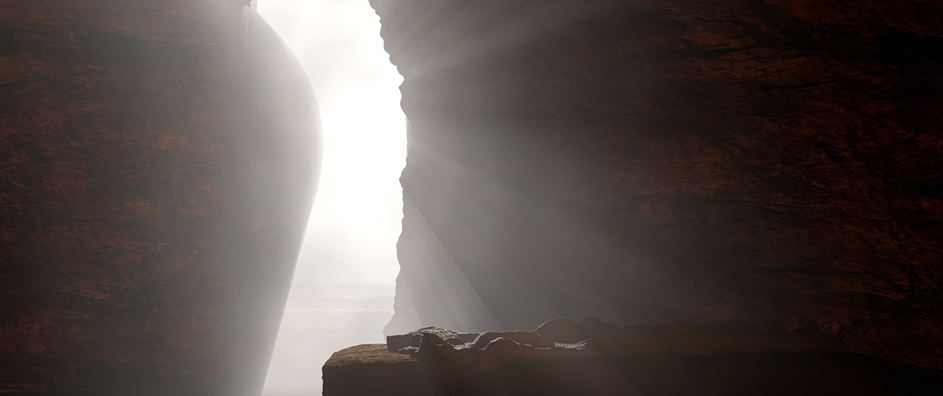The views expressed in our content reflect individual perspectives and do not represent the authoritative views of the Baha'i Faith.
Anyone who has read and studied the Bible knows about the persecution of the prophets. If you want proof, visit Jerusalem’s Church of the Holy Sepulcher.
Here’s just one of dozens of Biblical passages that record the mocking and reviling of God’s messengers:
The Lord, the God of their fathers, sent word to them again and again by His messengers, because He had compassion on His people and on His dwelling place; but they continually mocked the messengers of God, despised His words and scoffed at His prophets, until the wrath of the Lord arose against His people, until there was no remedy. – 2 Chronicles 36:15-16.
Christ was crucified; his disciples were shunned, jailed and stigmatized; his early followers were thrown to the lions. The Baha’i teachings pay tribute to Christ and his followers, and remind us about the radical change in attitude toward them as time went on:
Consider how the Disciples were treated. While they were alive people would not have anything to do with them, but later on they felt greatly glorified if they had even the remotest relationship with them. They became respected and revered;-even the earth that was touched by their feet. Now the people prostrate themselves before their tombs, but they were persecuted while they lived. At that time people did not like to be known as relatives of these Disciples of Christ. – Abdu’l-Baha, Star of the West, Volume 3, p. 84.
Abdu’l-Baha put this highly ironic reversal in stark relief when he told the story of encountering a group of 19th-Century Christian pilgrims:
While I was travelling in Palestine I came across a stony piece of ground. I saw that a number of people had gathered around one stone, kissing it, weeping and supplicating. I asked one, “What is this?” He told me that the Apostles of Christ, once upon a time, had passed by this place and sat upon these rocks, but there were so many rocks they did not know on which the Apostles had sat. Therefore they prostrated themselves before all of them that perchance they might come across and kiss the right stone. In their own day the people beat them, put them in prison, ridiculed them, exiled them from their own cities and finally martyred them. They even did not give permission that they might be buried in their own cemeteries. – Ibid.
For eighteen hundred years, historians have identified the traditionally-accepted burial place of Christ as the Church of the Holy Sepulcher in Jerusalem. Thousands of people visit that church every day, to pray and contemplate Christ’s life and teachings. Did you know, though, that one of the holiest sites in the world used to be a garbage dump?
We know from Biblical accounts that Christ was crucified near Jerusalem, outside the city’s walls at Golgotha, where all executions took place then. Historians and scholars report that Christ’s body was not brought back into the city after his execution, because he was thought to be an imposter. Instead, he was buried outside the city walls, and the place of his burial became a refuse pit.
Then, after the Emperor Constantine the Great ascended to the throne and became the first Christian monarch during the third century A.D., he asked his mother Helena to find the site of Christ’s tomb. She searched for it and believed she had found it, and on that spot Bishop Macarius of Jerusalem built the Church of the Holy Sepulcher, now deep within Jerusalem’s extended walls. After the discovery, Emperor Constantine sent Bishop Macarius this letter:
Such is our Saviour’s grace, that no power of language seems adequate to describe the wondrous circumstance to which I am about to refer. For, that the monument of his most holy Passion, so long ago buried beneath the ground, should have remained unknown for so long a series of years, until its reappearance to his servants now set free through the removal of him who was the common enemy of all [the previous emperor, Hadrian], is a fact which truly surpasses all admiration…
Abdu’l-Baha gave a fascinating explanation of this process and the building of the Church of the Holy Sepulcher that highlights the continuing persecution of Christ and his followers—even after his death:
They were not willing to have the body of His Holiness Jesus Christ put in the Jews’ cemetery. The Apostles went and bought a piece of land and interred him. Then the Jews took their refuse there. Later men came and built a great church over it. This was built by the mother of one of the Caesars, after three hundred years. Even up to this time in certain parts it is known as the Church of Refuse. This is really the Tomb of Christ. It was the place where all the refuse of the city was gathered in the day of Christ. For three hundred years it continued in this manner. You can go now and see what wonderful change there is, see what a wonderful church is built, how many jewels and precious stones are collected there. The statue of Christ is bejewelled with all kinds of precious stones, so are the statues of Mary and others. How different the attitude of the people in the days of Manifestations. They persecute, deride and ridicule them, put a crown of thorns upon their heads, beat them in the street, spit in their faces and finally crucify them. But later on they worship their images, kiss the ground upon which they walked, or the stone upon which they sat. This is the attitude of the people. – Ibid.
What a wondrous and perplexing chain of events—Christ went from an ignominious crucifixion, executed like a criminal and reviled even after death; to one of the most revered prophets in all human history, now followed and worshipped by a billion people. His earthly persecution turned glorious at last.
That same process has repeated itself across the entire history of religion, and now repeats itself again in the history of the Baha’i Faith:
God sent all His Prophets into the world with one aim, to sow in the hearts of men love and goodwill, and for this great purpose they were willing to suffer and to die. – Abdu’l-Baha, Paris Talks, p. 108.
You May Also Like
Comments

















In the interest of following Abdul-Bahá's example. Would you mind capitalizing the pronouns of Christ? All the Messengers are one. It is hard to read news articles that so not capitialize the pronouns of The Blessed Beauty. How must our Christian friends feel, despite the tremendous love behind your article?
Thanks for your comment. Just so you know, BahaiTeachings.org follows the capitalization and diacritical conventions of the Associated Press Style Book, which does not call for the capitalization of personal pronouns unless they refer to God. The Universal House of Justice has written that Baha'i publishers may freely choose the publication style conventions they operate under, and we chose AP Style because it is the one most readers are familiar with, and because it is the standard for online and print publications worldwide.
Best,
David Langness
Managing Editor